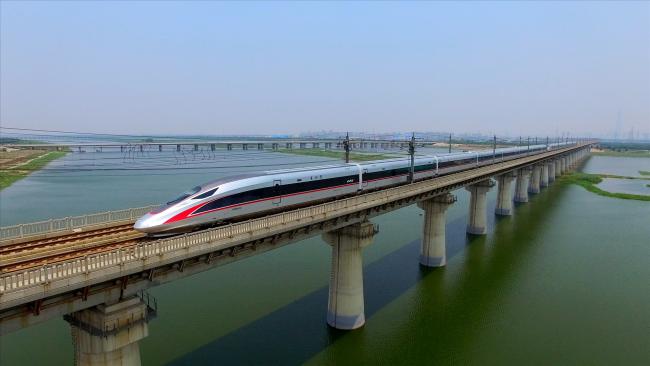
The history of China's high-speed trains
The China Centre lecture on Thursday 20 May 2021 was delivered by Professor Huaichuan Rui, Professor of International Business at the School of Business and Management, Royal Holloway, University of London. Professor Rui's lecture examined the Chinese high-speed rail (HSR) project in the context of the long-run evolution of the Chinese railway industry.
Before 1949 China's railway system was heavily reliant on western technology. After 1949 China's railway technology made great progress with strong technological support from the Soviet Union.
From the early 1990s onwards there was fierce debate about railway modernisation. In 2002 the key technological issue for HSR was decided in favour of the wheel-based approach rather than the magnetic 'maglev' technology. At that point the global HSR structure had developed into an oligopoly controlled by four western high technology firms. They had high hopes for their growth possibilities within China after it joined the WTO in 2001. Between 2002-8 China entered into cooperative agreements with the major global HSR firms: Kawasaki and Bombardier with CSR (China South Rail), Alstom and Siemens with CNR (China North Rail). The approach was not simply to 'trade market for technology'. Instead, the foreign partner was only paid when the final product was successfully delivered to the customer. This meant that the foreign partner had to work closely with the Chinese partner to transfer know-how.
After 2009 the Chinese industry turned towards indigenous innovation, with indigenous IPR and indigenous production capabilities developed along the whole value chain. The process involved more than 500 firms and 25 universities working in close collaboration. In 2015 CSR and CNR merged to form a single company, CRRC (China Railway Rolling Stock Company). In 2019 the European competition authorities blocked the merger of the high-speed rail divisions of Siemens and Alstom. China's HSR system now accounts for around three-fifths of the world's total HSR system. However, China's HSR still faces many obstacles in international expansion.
The issues raised in Q&A included: the technologies used to build tracks for China's HSR system; the profitability of China HSR system; the nature of the technology transfer process from global to Chinese HSR companies; and the counter-factual question of what the structure of the Chinese HSR market would have been in the absence of the Chinese government's industrial policy towards the sector.
Professor Huaichuan Rui is Professor of International Business at the School of Business and Management, Royal Holloway, University of London. She received her PhD from the Judge Business School, University of Cambridge in 2003. She has been leading a pioneering project entitled 'Chinese outward investment and multinational enterprises (MNEs)' since 2005, conducting over 800 interviews around the world and gauging local views and reactions on Chinese MNEs. She has recently worked on an ERC (European Research Council) funded project entitled 'Trust, Global Traders, and Commodities in a Chinese International City', exploring the role played by the city of Yiwu in the global trade in low-grade Chinese commodities. Professor Rui has been invited by various institutions including the United Nations and OECD to speak about China's investment, trade, multinationals and development experience.





